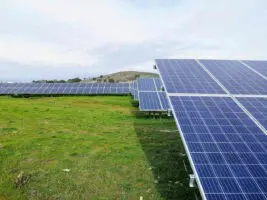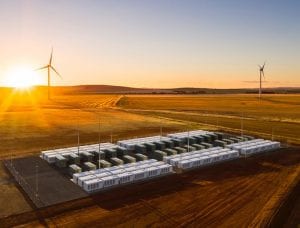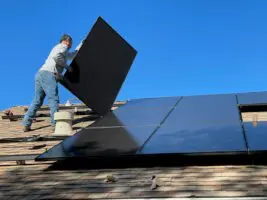The Australian solar industry has scored another win, with a University of New South Wales team taking out the top prize in engineering for their work on PV cells.
University of NSW professor Stuart Wenham and his team have taken out the A. F. Harvey Engineering Research Prize from the Institution of Engineering and Technology. The award includes $560,000 (£300,000) in prize money that will be put towards future research.
 Wenham said “the prize money will go a long way to helping us take the research to the next stage”. The project is expected to be completed by 2016.
Wenham said “the prize money will go a long way to helping us take the research to the next stage”. The project is expected to be completed by 2016.
The award recognises the discovery by Professor Wenham and his team of a mechanism to control the charge state of hydrogen atoms to correct deficiencies in silicon – the most costly part of a solar cell.
“Our patented advanced hydrogenation technology will allow lower-quality silicon to outperform solar cells made from better quality materials, producing higher efficiencies at significantly lower cost,” said Professor Wenham. (Sun last week announced they would extend a research project on hydrogenation with UNSW).
“It is a great honour to receive the A F Harvey Engineering Prize and the international recognition that it brings to this important innovation.”
“Our UNSW team is now working with the world’s biggest solar manufacturers through collaborative agreements with NewSouth Innovations to commercialise this low-cost technology,” said Professor Wenham, who acknowledged the Australian Renewable Energy Agency’s funding support for the project.
Stuart Wenham is currently the Scientia Professor of Electrical Engineering and Director of the ARC Photovoltaics Centre of Excellence at the University of New South Wales as well as being the CTO of Suntech-Power Co, one of the world’s largest PV manufacturers.
As RenewEconomy reported last May, Wenham’s team discovered a method to drastically improve the quality of low-grade silicon that bot reduces the cost of solar panels and boosts efficiency. UNSW’s patented technique can produce efficiencies between 21-23 per cent – up from the standard commercial cells of around 19 per cent.
In a previous interview with RenewEconomy Wenham also predicted that with these new advances in solar, the cost of making solar PV modules would fall another 50 per cent by at least 2020.
Wenham noted that rooftop solar had already reached grid parity in more than 100 countries, and was approaching parity at a wholesale level in competition with fossil fuels such as coal and gas.
Meanwhile, ARENA has announced $20 million to promote excellence in solar research through a new round of research and development programs dedicated to advancing renewable energy knowledge and expertise in Australia.
ARENA CEO Ivor Frischknecht said, “through this round we will build on Australia’s reputation for delivering world-leading photovoltaic and concentrating solar thermal technologies”.
“This investment will further enhance Australia’s R&D capability and increase the knowledge base required to make these technologies more competitive with conventional energy sources.”
Mr Frischknecht said building stronger relationships between research institutions and industry would help capitalise on Australia’s competitive advantage in the renewable energy sector.
Expressions of interest for the solar research round are open until 14 of February 2014.
Professor Wenham will deliver a special IET lecture in London on 21 May 2014 to commemorate his award. The lecture will be streamed live. For more details, visit here.








